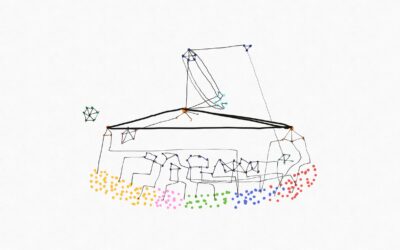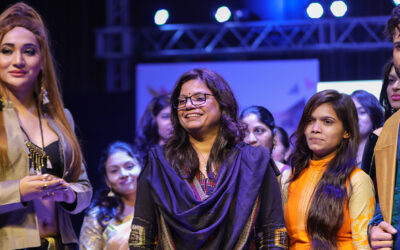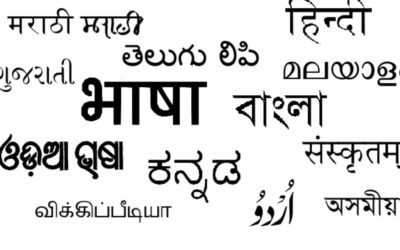In my second week at Swasthya Swaraj, I traveled with two of our team members to Taramundi, a beautiful hamlet in rural Odisha. Our team working on education in the region, had been receiving complaints that the classes are not regular here. We weren’t able to reach Taramundi in the first attempt as our motorbike got punctured. In the second attempt, we left early and reached in time. The objective was to monitor the work done by Sikhya Saathi (peer educator) of the hamlet and understand the challenges they were facing. Sikhya Saathis are the local educators who have completed 10th/12th grade in school, and are willing to take classes for the kids of their own village/hamlet. They would be trained in native language, given additional teaching support, and provided with infrastructural facilities.
As soon as we reached the village, we were looking for the Sikhya Saathi. A young guy approached us and invited us to his house. He started complaining about how the Sikhya Saathi is not working well, neither coming to the school daily nor talking to the villagers from time to time to keep them motivated to send their children.

After talking to a few more villagers about how the Sikhya Saathi is performing, we went to his house. We enquired him about how the classes have been going. He was honest to tell us that the classes have not been happening as children don’t turn up and the parents are not motivated to send them. It was like a chicken and egg situation where villagers say that the teacher is absent while the teacher says that children don’t come.
I did not have any agenda when I planned to accompany my team members to go there. The only intention was to see how the project had been implemented. My thoughts derailed from the conversation and I was observing the kids who were playing there. On the following days, I had discussions with the team working there, villagers, nurses in our clinics, Dr. Aquinas, the founder of our organization, on their thoughts about tribal education.
I ended up with disturbing, sometimes conflicting thoughts for many days. Here are some of them, in an earnest attempt to find compelling reasons to believe otherwise.
Is it necessary for tribal children to have regular formal education? These children are used to the wild; they like to be out, working in the ‘donger‘, near the river, co-living with animals. They learn about natural remedies, animal husbandry, crop production, climatic change control and management at a relatively young age from informal setups. Asking them to come to a school, sit inside closed rooms with blackboard and chalk, expecting them to learn in styles which are alien to them. – to me, it felt like taming the wild minds.
Are the schools in the tribal villages existing just for the sake of achieving the goal of ‘Education For All’? The appointment of the teachers is one of the reasons why I strongly feel that these schools exist only for showing progress on paper. Th teachers who are appointed generally don’t belong to the neighbourhood but they travel from 50-60 kms away. When such teachers who are alien to the tribal socio-cultural set up, who do not understand the importance of the task they have undertaken, are appointed, what can we expect?
Appointing teachers from the tribal communities/from the neighbourhood of the schools, are crucial to check absenteeism of teachers and reduce the language and cultural barriers between the teachers and students. But unfortunately the Government does not have a policy to address this issue.
In the years that Swasthya Swaraj has worked in the Kerpai and Silet GPs, teacher absenteeism has been the biggest challenge. Most of the appointed teachers are reluctant to stay in such remote and no-network villages. With little infrastructural support in terms of safe drinking water, toilet facilities, teaching materials, the teachers are unequipped. Swasthya Swaraj, through our ‘Health & Nutrition Promoting School‘ initiative have been trying to address this challenge.
The HNPS is a complementary programme run by us in addition to the government efforts towards tribal education. We follow the same curriculum, syllabus provided by the Odisha government. We appoint Sikhya Saathis from within their village/hamlet, who have a minimum qualification of 10th/12th, training them from time to time in various teaching methods. This way the teachers are familiar with their socio-cultural set up and very well understand the importance of the task they are doing. We also lobby with the respective government authorities to check the teacher absenteeism and improve the infrastructure facilities of these schools. We have been fortunate to receive positive response from the district education department and are supportive to our efforts. They acted promptly to refurbish the school buildings and toilets of atleast few of the schools. Despite these efforts, very less children turn up to the schools.

Do we understand ‘WHY’ parents and communities are not motivated to send their children to schools? For most of the indigenous people, providing education to their children does not have enough incentive as they don’t see any immediate visible benefit. Rather they see it as a waste of time. They live hand-to-mouth and are content with that. Even if they get educated, they wouldn’t find employment appropriate to their qualification in or around their own communities.
Most of the tribal men, who are not working in the ‘donger’, migrate to work in the cities for low daily wages. For them, work in any form is the eventual goal and they don’t comprehend the other aspirational objectives of education. Knowing that employment is not the sole objective of providing education to the tribal children, is our ‘WHY’ clear enough? For me, it was not.
“Providing them education is crucial to enable them to actively seek out their social, economic and political rights and preserve their culture”, said Dr. Aquinas when I asked her about why we should engage in providing education to the tribals.
Education is the primary means of ensuring indigenous peoples’ individual and collective development; it is a precondition for their ability to realize their right to self-determination, including their right to pursue their own economic, social and cultural development.
But how would we achieve this with a design that does not align with the objective? The design does not cater to the learning style, pace and needs of the children. The course curriculum, syllabus and textbooks are not inclusive of tribal culture, history and unique needs of the children.
Will a syllabus that non-tribal children learn be appropriate to the tribal children? Are they taught about their history, leaders, governing styles, socialistic style of living? Shouldn’t we include learning lessons which will help them in their interest areas of animal husbandry, land knowledge, cultivation, disaster management practices? Shouldn’t there be more documentation of tribal art forms and knowledge? Shouldn’t we aspire for inclusive education?
We should attempt to build activities and processes that seek to make a reality of the universal right to quality, relevant and appropriate education. Our system for tribal communities should be able to celebrate their diversity, promote participation, enable learning at home/in communities in formal/informal/non-formal set ups.
Marginalized groups, including tribal communities, face multiple barriers to education and are being left behind in terms of educational achievement. It is undeniable that it is crucial for individual and community development. But in the process of achieving ‘Education For All’, the system shouldn’t act as a catalyst for the disintegration of tribal culture.
Developing tailored, culturally and linguistically appropriate educational programmes for indigenous learners should be a priority. The most effective way to improve inclusive practices is to work in a community-based, bottom-up manner to ensure that infrastructure, pedagogical materials and curriculum meet the unique needs of indigenous teachers, learners and their communities. What we aspire for, should be inclusivity in tribal education to achieve true objectives of ‘Education For All’.




Nice way of presentation.❤️
Nice way of presentation.❤️
Very well explained!
Very well explained!
Really well written!
Really well written!